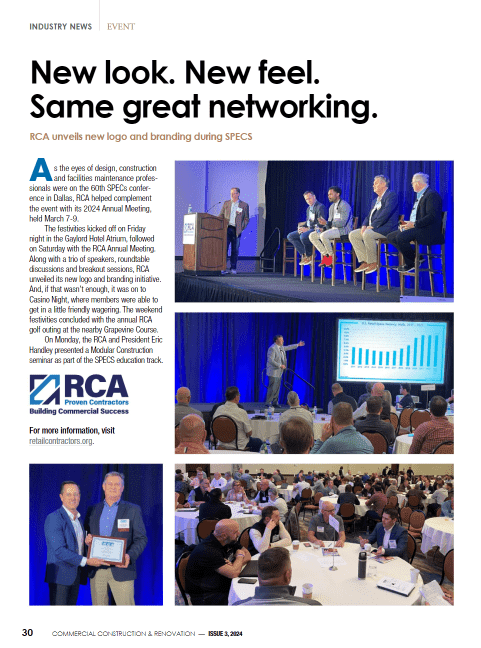It’s an all-too common scenario even for experienced contractors: relying on verbal conversations as a commitment for payment. It sounds simplistic, but too often I’ve seen situations in which contractors have agreed to change orders through a phone call or gotten verbal commitments from subs on scheduling. The contractor ends up losing if the customer refuses to pay.
We’d like to believe that relationships are strong enough to depend on someone’s word. Sometimes they are, but good business depends on getting everything in writing. Here are some tips for improving how you manage contracts at the beginning, middle and end of your commercial projects.
1. Read and update the contract—What have you agreed to and what have your customers or subs agreed to? Owners, especially owner operators, can get complacent regarding the language and commitments stated in their contracts. They may have a good attorney who reviewed their contract a couple years ago, but now their office staff cut and paste new customers into the same template over and over. Make sure that the current template you use is still accurate with regard to what you promise as a vendor as well as the current regulatory environment.
Even for companies that tailor a contract to each customer or sub, they may fail to review and accurately update a contract if there is a clear change of scope or an upgrade on materials. This is the biggest risk we see with regard to tracking project scope and linking it to actual project expenses.
Make sure that contracts are reviewed by legal counsel with experience in construction terms and agreements. This will support current language and proper formats in your contracts. Also, although software is never a substitute for good legal counsel, you could invest in secure contract management software with e-signature features to easily request signatures and store the most current contracts. If a question comes up, you have a central location for reviewing contract terms and confirming signatures.
2. Require timely requisitions—This area of the contract is challenging on large projects with multiple subs. Subs that are late on paperwork are not fulfilling the terms of their contract, that is, if the expectations for invoicing are clearly spelled out in their contract. Make sure that sub contract language is clear in that regard so that the GC can follow through on customer communications as well as manage the responsibility for accurate requisitions.
Make sure that requisitions meet the requirements of the primary contract with your customer. If there has been an upgrade or change of scope at the sub level, don’t wait to have a conversation about it at requisition time. Schedule time to touch base with subs and also develop a clear process for addressing customer requests at the sub level. Those requests should always be referred to the project manager in charge of the account or the general contractor to make sure that upgrades and related expenses are accounted for.
3. Keep detailed project estimates—Scope creep is ominous, especially to a customer paying millions of dollars. The pricier the project is, the higher the risk that a customer will refuse to pay for a portion of the project. Undocumented communications, unapproved change orders and failure to keep a detailed project estimate can derail the contractor’s ability to ensure payment for change orders at a later date.
The best practice is to disclose any recent changes in the original project estimate at the time of each requisition. Make sure that the customer who signed the original contract also signs the requisitions. That way, every time project estimates or costs increase due to customer requests or unforeseen circumstances, you are protecting your business interests. Remember, receiving money or verbal agreement to continue the project should not be considered legal approval. The customer may still object to paying more than the original contract estimate. Get it in writing.
Documentation of change orders is also important if the contractor must later report the change order as unapproved but unrelated to the contractor’s performance. Documentation can help support a claim or potential recognition of additional revenue from that claim in the future.
4. Track insurance coverage—As part of working with subcontractors, general contractors should require proof of general liability insurance by requesting a Certificate of Insurance. As an additional measure, the GC could request to be named as an additional insured on the sub’s insurance in the event that the customer files a claim against the subcontractor.
Agreements can also be made with regard to worker’s compensation insurance coverage for subcontractors, either by requiring the subcontractor to carry a policy or by including the subcontractor under the general contractor policy and passing on costs of that coverage to each sub involved in the project. Keep in mind that if an employee of a subcontractor gets hurt on the job, the employee could seek damages from the largest company available to cover medical costs.
5. Don’t text—In this era of texting and instant messaging, it might be convenient to talk about a project in quick chats, but it’s much easier to track conversation threads by email or even a mobile workflow application. If customer prefers to communicate on the go, add them to your workflow account and keep track of communications where everyone on the team can see them.
Include the use of this tool in customer contracts and make it part of the customer communication process. If you don’t have a workflow application, give the customer the option to email so at least all communications are in writing and accessible for proof of conversations. These communications may not hold up as official approval for change orders or increased project costs, but they are better than a verbal conversation that no one can prove…or possibly remember.
The big lesson with construction contracts is to make sure your contract language is clear and legally binding, that you understand the contract terms and deliverables, and that any changes are captured in writing with the customer’s signed approval.
______________________________________________________________
Robert E. White, CPA, is a partner with Markowitz, Fenelon & Bank LLP on Long Island, New York, and the chair of the firm’s construction niche. He focuses his practice on tax planning for high-net worth individuals and closely held businesses as well as multi-generational business succession planning, gift and estate tax planning and real estate transactions. Visit www.mfbcpa.com









 The 2024 virtual Men’s Round Table will be held Q4, 2024, date TBD.
The 2024 virtual Men’s Round Table will be held Q4, 2024, date TBD.











